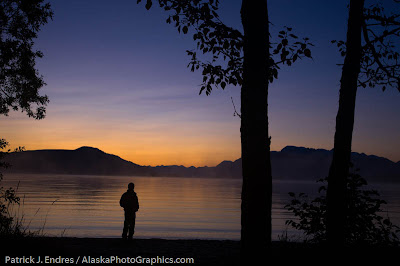Photography in Alaska's arctic, particularly in the snowy months, presents many subjects and scenes filled with white, and often a white subject on a white background. While traveling with a photo tour group, one of the sharp-eyed guests (thank you Skip) spotted this arctic fox curled up in a snow drift on a frozen lake.
 Arctic fox, first frame from some distance.
Arctic fox, first frame from some distance. arctic fox looked up occasionally during approach, taken on tripod
arctic fox looked up occasionally during approach, taken on tripod
Alaska's arctic north slope is flat, and there are few geological features of relief. We decided to try to approach the fox, moving slowly. It seemed remarkably unconcerned by our slow approach, and we continued to photograph at each successively closer location.
 closer yet, but lacking contrast
closer yet, but lacking contrast
The white on white scene shows the effectiveness of the cryptic color phase that this fox adopts as the ground turns white with snow. However, I wanted more contrast. The only way to achieve this was to basically put the camera on the surface of the ice, as low as possible, in order to include some of the gray sky in the background. After some time, and many photographs, the fox gave us a few occasional glances, but eventually curled up in a ball and went back to sleep.
 Canon 1Ds Mark III, 500mm f4L IS, with 1.4x (700mm)Arctic fox, camera positioned on the ground to include the sky as contrast. 1/800 sec @ f6.3, ISO 800
Canon 1Ds Mark III, 500mm f4L IS, with 1.4x (700mm)Arctic fox, camera positioned on the ground to include the sky as contrast. 1/800 sec @ f6.3, ISO 800The frames show the progression of photos from the first shot quite some distance away, to the final frames utilizing the sky for some contrast and color. There is usually an evolution in the process of shooting any given subject, and thinking about foreground, background, light direction, exposure, etc., all play into the challenge.
 Canon 1Ds Mark III, 28mm (24-105mm f4L IS) 160 sec @ f/22, ISO 400
Canon 1Ds Mark III, 28mm (24-105mm f4L IS) 160 sec @ f/22, ISO 400












